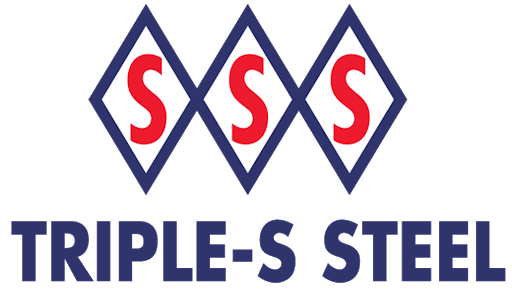



In 2020, the global stainless steel pipes and tubes market reached a value of $28.98 billion. It may come as no surprise that there are different types of pipes and tubes, and sometimes the differences are not very clear.
TS steel and HSS steel are two such types, and it is often believed that they are the same thing. There are differences, however, and when it comes to choosing which type you need for a job, it is very important to make the right choice. For more information on how these two differ, keep reading.
Tube-shaped steel (TS) and Hollow structural section (HSS) steel – what are they and how are they different?
Tube-shaped steel is a long hollow section – usually circular in shape, but can also be square. Generally designed for use with liquids and gases in terms of movement. An alternative use is to encase and protect electrical wires. The term ‘pipe’ is commonly used to describe a tube, and in some ways, they are almost identical. The difference here is that tubes must meet more precise technical specifications. A 1-inch pipe, for example, will not necessarily specify whether that measurement is the external or internal diameter. For a tube, however, that specification must be given.
TS steel must meet ASTM A53 specifications meaning that it is carbon steel, seamless, and welded. It is hot-dipped galvanized and zinc-coated. The diameter can range from NPS 1/8 to NPS 26, nominal wall thickness.
Hollow structural section steel is very similar to a tube. Made up of a hollow cross-section in a number of shapes such as circular, oval, rectangular, or square. Other shapes can also be made to meet specific requirements.
HSS is a term generally only used in the US and nations that use US building language. Countries that use UK building language use RHS (rectangular hollow section), CHS (circular hollow section), and SHS (square hollow section). HSS steel parts must meet ASTM A500 specifications for cold-formed welded and seamless carbon steel. This is a structural specification, unlike the A53 grading for TS steel, which relates to the chemical composition.
For A500 the yield strength must be 46,000 psi (compared to 35,000 psi for A53) giving HSS steel a much better strength-to-weight ratio. This means less steel needed for a job, giving an overall decrease in cost. The surface finish of HSS steel is better than A53 which is generally given a lacquer coating. If the part requires welding/painting, the lacquer coating must be removed. This is another time/money-saving element of HSS.
Another requirement of TS steel is pressure testing. This is not required for structural uses, so again adds further cost to TS steel.
In general, TS and HSS are graded and shaped differently. As TS is generally used to transport fluids, the sizes can often be more lenient than HSS. HSS steel needs to be made to exact specifications.
Tube measurements come in two parts – the nominal pipe size (NPS) and the schedule. This is the approximate outer diameter and the wall thickness of the pipe. The inner diameter can be calculated by subtracting the schedule from the NPS. The inner diameter is the measurement that is most crucial. This value along with the length gives the total volume of the pipe. The capacity is one of the main factors when using TS steel.
Measurement for HSS steel, however, a taken as wall thickness (gauge) and the exact outer diameter. This is due to the applications of HSS steel. As it is used as a structural component, strength is the key characteristic. The gauge is the best way to determine the strength of a part.
Due to the different uses for each type, the sizes can also be very different. TS steel can be up to NPS 26 (26-inch diameter), depending on the application. HSS steel will generally be a lot smaller – the largest standard rectangular hollow section sizes rarely go over 10 inches.
There are many uses for HSS, and the shape chosen will depend on the use of the part.
Rectangular sections are often used on welded steel frames. They are well suited to deal with the multi-directional loading that is present. The strength of these parts also makes them suitable for use as beams or pillars in structural applications. It is also not uncommon for parking lot barriers to be made from HSS steel.
As TS steel is galvanized and zinc-coated, it has improved corrosion and rust resistance. This naturally makes it an excellent choice for any equipment that will be transporting liquids or gases. It is common in different machine parts such as hydraulic lifts, conveyor belts, and mills.
TS steel is present in most vehicles. Cars, trucks, trains, and planes all use steel tubing. The transportation of fluids is essential in engines, and other components such as muffler components and exhaust pipes can also be made with A53 steel.
The aerospace industry relies heavily on steel tubing for its chemical properties as well as its strength. Exhaust stacks, motor shafts, landing gear, and many other parts are often constructed from TS steel. The medical industry also uses a lot of steel tubing for durable and high-quality equipment.
Intsel Steel West is a leading supplier of all types of steel. HSS steel, TS steel, or anything else – whatever your project is, we’ve got you covered! Our steel services offer next-day delivery all over the Western United States. Get in touch with us and let us know what we can do!